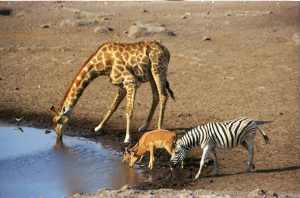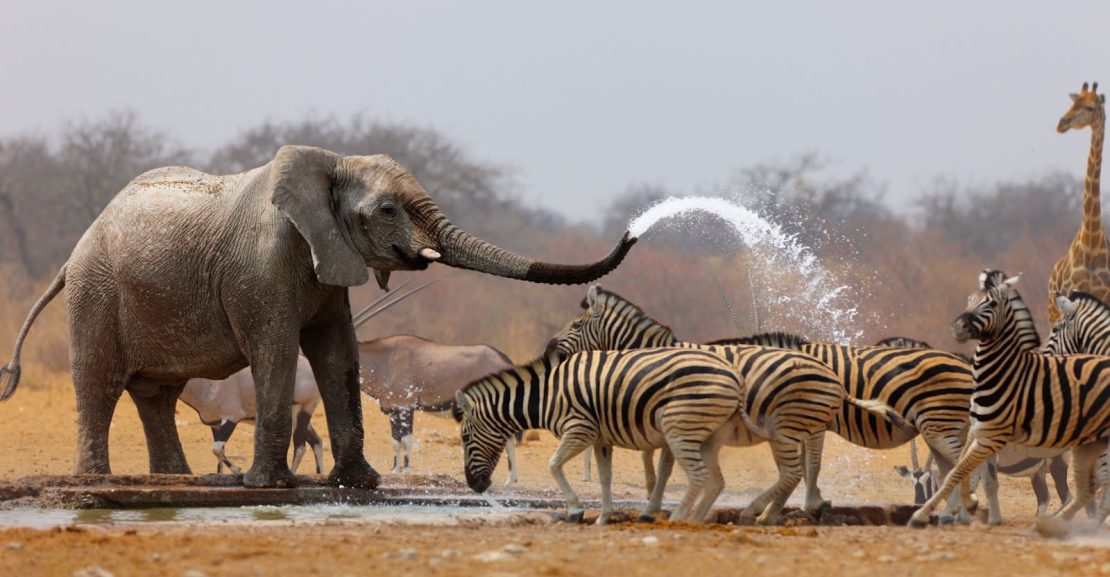Practical Tips and Advice for Every South African Getting Geared for Botswana – Trip 1!
Ofcourse at some point you’re going to hear of this land of beauty and splendor…You’re going to get bitten by the travel bug once more and you’re going to decide this is what you want to experience next!
As you are already aware, you have the most pleasant trips when prepared for anything and everything it offers and throws at you – the good and the not so pleasant – one thing is certain though, you’re always better off with as much information as possible for the trip beforehand…
And as always, this is where 4x4motoring.com fits into the picture! Thinking about or planning for Botswana…we’ve got your back!
Right…Let’s Go!
FIRST THINGS FIRST
- South Africans don’t need visas to enter Botswana.
- The Botswana border is 4 to 7 hours drive from Johannesburg, depending which of the 17 border crossings you choose.
- From the border it is another day to day-and-a-half’s drive to Botswana’s various national parks or game reserves.

KA-CHING!
- Botswana’s currency is Pula (BWP). The Pula is currently stronger than the Rand at an exchange of R1.30 to 1 Pula.
- Groceries, food, drinks, etc. are roughly the same price as in South Africa.
- Botswana’s towns have all the familiar stores and franchise outlets (Spar, Woolworths, Nandos, KFC, Steers, etc).
7.Don’t exchange Pula at the border. It’s best to arrange some currency with your bank before travelling (you’ll need Pula to pay your road levy at the border — see point 15 below).
- You can withdraw Pula from ATMs in all tourist destinations, towns and cities.
- Most lodges, hotels, stores and all fuel stations we visited accepted credit cards.
- Most campsites, Department of Wildlife and National Parks (DWNP) authorities, small shops and many small tour operators only accept cash.
GLUG-GLUG
- At time of print fuel in Botswana is 12% cheaper than in South Africa.
- Most fuel stations accept credit cards (VISA and MasterCard only). SA garage cards are not accepted for fuel.
- Plan your route based on fuel consumption and your vehicle’s tank size. Most 4×4 rental vehicles have long-range fuel tanks for good reason. Double check your route against available fuel stations. Take Jerry cans if necessary.
BORDER CROSSINGS
- Each person entering Botswana needs to check in at customs at border control.
- Each vehicle must also be registered upon entry. You’ll be charged a BWP140 (approx R182) fee per vehicle. This goes towards their national road fund. Be sure to have Pula for this as officials won’t accept Rands.
- Most border crossings are open from 8am to 4pm. A few of the more popular ones are open longer. Check the full list of SA-Botswana border crossings indicating their SA and Botswana names, open times, telephone number and exact GPS co-ordinates.
- Important: Allow anything from 1 to 3 hours to get through the border. If you’re going through a gate on a popular route or during school holidays be patient. Plan your route so that you have at least 3-hours to spare, should you need it. (see point 20 about the dangers of driving at night).
DRIVING BOTSWANA
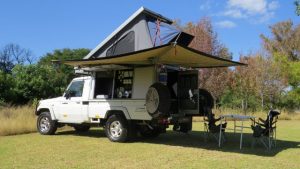
- Botswana’s main transit roads and highways are in good condition. Some better, some worse than SA’s roads. For example, the main North-South A3 from Kasane to Francistown is single lane each way with a wide shoulder. The A1 South from Francistown to the SA-border has no shoulder and is in worse shape due to trucks using it. But there are newer, quieter alternate routes you can use. Check the forums or ask other travellers as you go.
- Never. Travel. At. Night.
- No jokes. Donkeys, cattle, antelope and elephants wander across the roads at night. In spite of their size, elephants are particularly hard to see with headlights at night. Plan your route to avoid any night driving.
- A 4×4 vehicle is not needed if you’re sticking to the main roads and highways. Nowadays you can make it all the way to Cairo in a regular car.
- However, 4WD capability is 100% essential if you wish to enter Botswana’s national parks and game reserves.
- If you’re new to 4WD driving, be sure you learn:
- When and how to deflate your tyres for sand-driving.
- How to change a wheel in off-road conditions
- How to use a HI-Lift jack(or whichever specialist equipment is supplied with your 4×4).
- When to — and more importantly when NOT to — engage the various 4WD modes (4H, 4L, diff lock) in your vehicle.
- Start your days early, when it’s cooler and there’s more wildlife to be seen.
- Keep a safe travelling distance on both the main highways and in the bush. Not only is it courteous to other safari-goers, but if you’re right on someone’s tail and they suddenly come across an angry elephant bull in or near the road, the vehicle ahead of you may just need to reverse in a rush.
NAVIGATION
- Take a good map. Yes, we still recommend taking along an traditional paper map.
- A GPS is also highly recommended.
BUSH CAMPING
- Pre-book campsites. If you’re travelling in high-season (May to October) you should book 6-12 months in advance.
- Know your campsites’ open and closing times. Don’t arrive late. You will be fined.
- Be aware of the animals that are pests or dangerous at camp sites. Ask the campsite officials or other travellers what to look out for at night. Or simply have a look around for spoor around the campfire and along the roads in and out of your camp. You’re likely to get visits from various birds, jackal, hyena, elephant and on occasions leopard and lion. Read more about setting up an awesome bush camp that will keep you comfortable and safe.
FOOD AND WATER
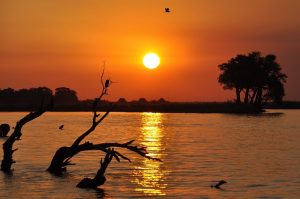
- It’s a misconception that you may not take meat into Botswana. You are allowed to, but see the next point.
- Botswana and all of its wildlife reserves are completely unfenced, bar one: the “vet fence” which runs roughly east-west across the middle of the country. No unprocessed meat may cross this fence (i.e. chops, steak, fillet, boerewors etc). The purpose of the fence is to prevent the spread of foot-and-mouth disease. Chicken is allowed. So plan your meals accordingly and buy your meat in Botswana’s main towns (Gaborone, Francistown, Maun and Kasane) rather than packing meat from your favourite butcher back home. Botswana has good quality beef, often at lower prices than South Africa.
- Officials stop vehicles randomly at vet fence checkpoints and are entitled to search the entire vehicle. Most will only look in your fridge and cooler box. We crossed half a dozen vet fences and were stopped only once when heading South at the end of our two-week trip. At this stop, some of our fruit and vegies were confiscated to limit the spread of fruit flies.
- Carry lots of water with you, ensuring you have at least 2 litres per day per person. Always carry enough to make it to your next main town or shop. Botswana can get very hot, especially from November through to March. You may experience seven consecutive days with 40+ degrees celsius mid-November – so dehydration is a real risk.
CELLPHONE COVERAGE AND SIGNAL
- SA cell phone networks work in Botswana, although roaming costs apply.
- The two main gateways to the Okavango Delta — Maun in the South and Kasane in the North — both have good cell phone coverage. As do most towns on the main roads and highways.
- Cell coverage is intermittent between towns on the highways.
- There is virtually ZERO cell phone coverage in the Moremi and Chobe wilderness areas. Likewise at many other wilderness parks. Our advice: notify your friends and family that you’ll be out of reach for a few days and enjoy being disconnected.
THE BOTSWANA PEOPLE
- All officials we encountered at border crossings, roadblocks, vet fences and park entrance gates were courteous and efficient.
- Botswana’s mostly hand-written systems seemed a little archaic, but all serve their purpose. Be patient and go with the flow.
- English is widely spoken by the locals, although broken at times. We never struggled to communicate.
- It’s a sign of respect to remove dark sunglasses when speaking to officials.
- Greeting and pleasantries in the locals’ mother tongue is recommended and can go a long way to having a smooth and pleasant trip:
- Hello = Dumela ma/ra (ma = female, ra = male)
- Thank you = Ke a leboga ma/ra
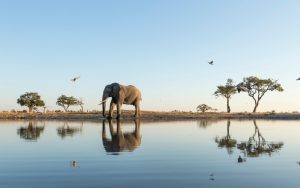
- WHAT TO PACK
– Long sleeve easy-breathing fabric shirts (keeps sun off in the day, and mozzies off at night)
– Sandals or flip flops (good quality with solid rubber soles – Botswana’s trees have vicious thorns that will push straight through your beach-style flip flops)
– Closed shoes
– Sunscreen
– Good hat
– Rain jacket
– Sunglasses
– Head-torch
– Camera
– Binoculars
– Basic first aid kit
– Malaria meds
And there you have it!…Ofcourse,You’re welcome ;)…Go out there and have fun!
